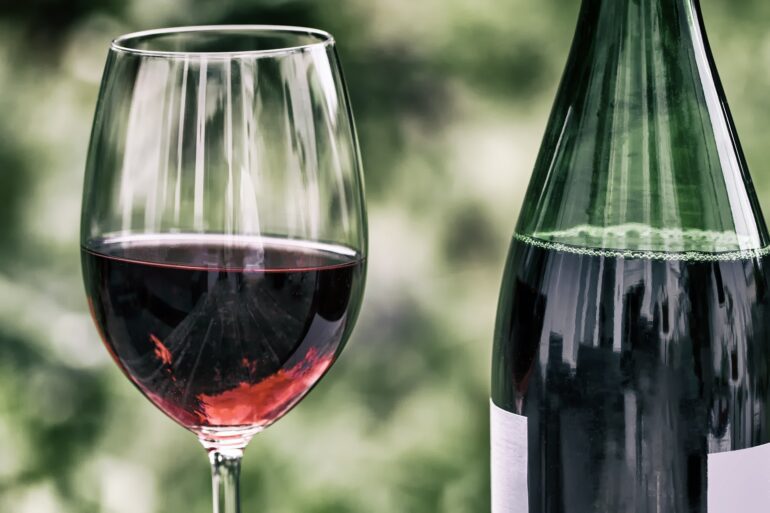TL;DR:
- Researchers from the University of Geneva have developed an AI tool using machine learning to identify wine origins based on chemical analyses.
- The tool distinguishes wines by subtle differences in chemical compounds, tracing them back to specific vine-growing regions and estates.
- Wine fraud, a persistent issue, is targeted by this technology, ensuring the authenticity of fine wines.
- Gas chromatography was used to train the AI program, which creates unique chemical signatures for each chateau.
- The program’s results align with the physical locations of estates, affirming the link between terroir and wine composition.
- While highly accurate in identifying chateaux, it struggles with distinguishing vintages.
- This technology could aid in confirming wine label authenticity and has potential applications in quality control and blending.
- In a market where fake wine costs billions in lost sales, this AI tool offers a promising solution.
Main AI News:
In the world of fine wines, where authenticity and provenance are paramount, the scourge of counterfeit bottles has long plagued both collectors and connoisseurs. However, there is new hope on the horizon for those seeking to protect the integrity of their cellars. Researchers have unveiled a groundbreaking AI tool that promises to revolutionize the wine industry by exposing fraudulent vintages.
The scientists behind this innovative technology hail from the University of Geneva in Switzerland, led by the distinguished Professor Alexandre Pouget. Their mission is to create an artificial intelligence system capable of identifying wines’ origins through routine chemical analyses. This AI tool, powered by advanced machine learning algorithms, delves into the subtle nuances of chemical compounds present in wines, allowing it to pinpoint not only the specific vine-growing region but even the very estate where the wine was produced.
Wine fraud is a persistent problem, with counterfeiters producing subpar concoctions, slapping on labels, and selling them for exorbitant prices. Professor Pouget states, “There’s a lot of wine fraud around with people making up some crap in their garage, printing off labels, and selling it for thousands of dollars. We show for the first time that we have enough sensitivity with our chemical techniques to tell the difference.”
To train this AI program, the researchers turned to gas chromatography, a standard laboratory technique used to analyze chemical mixtures. Instead of focusing on individual compounds to differentiate wines, the algorithm harnesses the collective data from all the chemicals detected in a given wine, determining the most reliable signature for each. The results are presented on a two-dimensional grid, where wines with similar signatures are grouped together.
What emerged from this comprehensive analysis was nothing short of astonishing. Clusters of wines aligned perfectly with specific chateaux, revealing a unique chemical signature for each estate that transcends vintage variations. As Professor Pouget aptly puts it, “It’s the overall pattern of concentrations of many, many molecules that distinguishes chateaux. Each is a symphony: there isn’t a single note that distinguishes them, it’s the whole melody.”
Furthermore, these chemical signatures also mirrored the physical locations of the chateaux on the Bordeaux map, affirming the link between terroir and wine composition.
David Jeffery, an associate professor in wine science at the University of Adelaide, acknowledges the transformative potential of machine learning in the food and agriculture sector, stating, “The power of machine learning for this kind of investigation is becoming more evident with each new application.”
While the AI program exhibited an impressive 99% accuracy in tracing wines back to their respective chateaux, its ability to distinguish vintages was less robust, achieving a 50% accuracy at best. Nonetheless, the implications of this research extend beyond fraud detection.
In a region where fake alcoholic beverages result in €3 billion (£2.6 billion) in lost sales annually, the AI tool could prove instrumental in verifying the authenticity of wine labels. Recent cases have shed light on the extent of criminal networks involved in the industry, with gang members convicted for smuggling Spanish table wine into France and rebranding it as Bordeaux.
Professor Pouget envisions broader applications, suggesting that the AI approach could be used to monitor quality throughout the winemaking process and optimize blending for enhanced quality. “Wine blending is the key step in making great Bordeaux and Champagne. Having tools like this would make it a lot cheaper to make great blends, which would benefit everybody,” he contends.
Conclusion:
The development of this AI tool represents a significant advancement in the wine industry, offering a powerful means to combat fraud and maintain wine authenticity. It not only assures consumers of the wines’ origins but also has potential applications in enhancing quality and blending processes. As the wine market continues to grapple with counterfeiting, this innovation promises to bring much-needed transparency and security to wine enthusiasts and producers alike.

